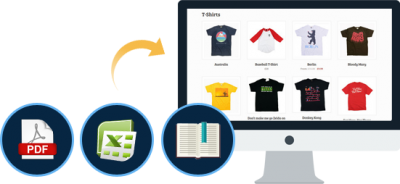
Role & Privilege Management for Effective Ecommerce Operations
Role & privilege management for effective Ecommerce operations is vital for maintaining security and efficiency in your business. Properly managing roles and privileges ensures that employees have the appropriate access to perform their tasks while protecting sensitive information. In this blog post, we will delve into the importance of role and privilege management and how it can enhance your Ecommerce operations.
Understanding Role & Privilege Management
Role & privilege management involves defining and controlling access levels for different users within your Ecommerce system. This process ensures that each user has access only to the features and data necessary for their role. Effective management helps prevent unauthorized access and reduces the risk of data breaches.
Why Role & Privilege Management Matters
Implementing a robust role & privilege management system is crucial for several reasons. Firstly, it enhances security by limiting access to sensitive information. Secondly, it improves operational efficiency by ensuring that employees can focus on their specific tasks without unnecessary distractions. Lastly, it helps maintain compliance with regulatory requirements.
1. Define User Roles Clearly
The first step in role & privilege management is to define user roles clearly. Identify the various roles within your Ecommerce business, such as administrators, managers, sales representatives, and customer support agents. For each role, specify the tasks they need to perform and the information they need access to.
For example, administrators may require access to system settings and user management, while sales representatives only need access to order processing and customer data. Clear role definitions ensure that users have the appropriate level of access.
2. Implement Role-Based Access Control
Role-based access control (RBAC) is a widely used method for managing user permissions. With RBAC, users are assigned roles, and each role has predefined permissions. This approach simplifies access management by grouping permissions according to job functions.
For instance, a “Marketing” role may have access to promotional tools and campaign management, while a “Finance” role may access financial reports and billing information. Implementing RBAC streamlines permission management and enhances security.
3. Regularly Review and Update Permissions
Permissions should not be static; they need regular reviews and updates. Periodically assess user roles and permissions to ensure they align with current job functions. For example, if an employee changes roles or leaves the company, their access permissions should be adjusted accordingly.
Regular reviews help prevent security risks associated with outdated or excessive permissions. By maintaining up-to-date access controls, you safeguard sensitive data and ensure operational efficiency.
4. Enforce Strong Authentication Measures
Strong authentication measures are essential for secure role & privilege management. Implement multi-factor authentication (MFA) to add an extra layer of security. MFA requires users to provide additional verification, such as a code sent to their phone, in addition to their password.
Enforcing MFA helps protect against unauthorized access, even if passwords are compromised. This added security measure is particularly important for users with elevated privileges, who have access to sensitive data and system settings.
5. Monitor User Activity
Monitoring user activity is crucial for identifying and responding to potential security issues. Implement logging and tracking mechanisms to record user actions within the system. Regularly review these logs to detect unusual behavior or unauthorized access attempts.
Monitoring helps you quickly address potential security breaches and maintain the integrity of your Ecommerce operations. Additionally, it provides insights into how users interact with the system, which can inform improvements.
6. Provide Training and Awareness
Training and awareness are essential components of effective role & privilege management. Educate employees about the importance of access controls and best practices for securing their accounts. Regular training sessions can help prevent accidental data exposure and ensure users understand their responsibilities.
For example, train employees to recognize phishing attempts and use strong, unique passwords. Providing ongoing education helps foster a security-conscious culture within your organization.
7. Use Automation Tools
Automation tools can streamline role & privilege management, especially in large organizations. Implement tools that automate the process of assigning and revoking permissions based on user roles. Automation reduces manual errors and ensures that access controls are consistently applied.
For instance, use automated workflows to handle role changes, such as promotions or department transfers. This ensures that permissions are adjusted promptly and accurately, enhancing both security and efficiency.
Conclusion
Role & privilege management is crucial for effective Ecommerce operations. By defining user roles clearly, implementing role-based access control, and regularly reviewing permissions, you can enhance security and efficiency. Enforcing strong authentication measures, monitoring user activity, and providing training are also key to maintaining a secure environment.
In summary, a well-implemented role & privilege management system safeguards sensitive information and ensures that employees can perform their tasks effectively. By prioritizing access control, you protect your Ecommerce operations from potential risks and support a smooth, efficient workflow. Start implementing these strategies today to strengthen your role & privilege management and boost the effectiveness of your Ecommerce business.
